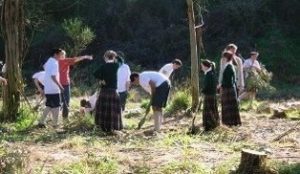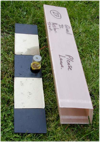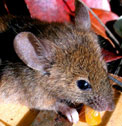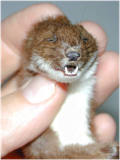Education
 Mahoe Reserve provides educational opportunities for the local and wider community. Originally initiated by Lincoln High School Year 9 students in 2002, the reserve has been developed as a living classroom where school students, along with their friends and families have the opportunity to participate in a regeneration project.
Mahoe Reserve provides educational opportunities for the local and wider community. Originally initiated by Lincoln High School Year 9 students in 2002, the reserve has been developed as a living classroom where school students, along with their friends and families have the opportunity to participate in a regeneration project.
Children from local pre-schools, Scouts and Primary School are involved in planting days, while students from Lincoln High School volunteer their time. Those involved become more aware of environmental issues such as biodiversity and sustainability. Environmental organisations are encouraged to be involved in a range of science-based activities such as researching changes to plant, bird, reptile and invertebrate communities.
Interpretation plaques provide visitors with an understanding of the complex, ecological relationships that exist in New Zealand’s natural indigenous forests and restored urban sites. Community awareness is important for the long-term survival of many species in highly modified environments like Canterbury.
For example, the New Zealand native pigeon, or kereru, currently threatened by habitat loss and under pressure from mammalian predators, play a key role in balancing forest ecosystems. As the only disperser of large seeds such as karaka, tawa and kohekohe, their presence is essential to maintain seedling regeneration. As a result of habitat modification Kereru are also impacted by limited food supply.
New Zealand native flax and kowhai provide essential energy supplies in the form of nectar for bellbird, tui and waxeye. These and many other plant species were highly regarded by Maori for medicinal and traditional resource use.
The Mahoe Reserve is a model restoration site for the community, providing inspiration to achieve a wider aim to link regenerating native areas and corridors together to improve suitable habitat and increase biodiversity.
Ecology
The Reserve has nearly completed its main planting programme with a focus on eco-sourced native plant species that provide suitable habitat for birds, lizards and insects. As the plants grow, the native plants will provide animal species with food and shelter, contributing to a functioning ecosystem.
To ‘kick start’ this habitat we’ve creating artificial refuges to support and encourage colonisation of the reserve. Wooden discs, weta motels, and lizard lodges will be placed throughout the reserve to provide safe refuges from predators, to encourage population colonisation and to increase biodiversity.
An area of interest and future research will consider the small things that matter, the invertebrates. Although invertebrates make up the greatest biodiversity on earth (>95%), they are often the forgotten fauna despite their key ecological roles in the ecosystem (e.g. nutrient cycling, aeration of the soil, seed dispersal, pollination, etc.). People rarely observe their diversity and beauty because many invertebrates are small or there is insufficient local habitat to support them.
Although the Mahoe Reserve is being restored with native plant species, it is important to recognise the contribution of some introduced species in the area. These have provided both shelter for native seedlings and a food source for visiting nectar feeders such as bellbirds. The introduced exotic trees will be gradually removed from the Reserve as the native plants become more established.
Pest Management
Since human settlement, the introduction of mammalian predators to New Zealand has seen many native species become extinct. Cats, mustelids (stoats, weasels and ferrets), rodents, possums and hedgehogs are well established throughout the Canterbury plains, including Lincoln Township. These species eat eggs, young and adult birds as well as invertebrate and lizards.
For native species to re-colonise and survive in restored areas such as Mahoe Reserve, we must provide protection from these predators. Tracking tunnels (below) can be used to monitor the presence of predators within the reserve. These have an ink pad in the middle and blank cardboard at each end. They are baited with peanut butter to attract the predators, which walk across the ink and leave their prints behind.


Tracking tunnel and ink pad used to monitor and examples of prints found (right)
If evidence suggests that there is a risk to the native flora or fauna, then appropriate methods will be used to reduce predator populations to a low or undetectable level. Small traps that exclude other animals would be used for mice, rats and stoats. Hedgehogs and possums can be caught in live capture traps and moved to another location away from the Reserve.
Cats are known to eat insects, lizards, and birds, and in urban environments such as Lincoln Township, domestic cats may prey on fauna within the reserve. However, as we know, cats also eat rats and mice, so having them in the neighbourhood may assist us in our pest control efforts. Cat owners need not be concerned as NO TRAPS will be used that target cats.


Following research on what predator species were found in the reserve by a Year 10 class which showed that hedgehogs were a major predator of skinks there has been an area set up as a skink sanctuary with a hedgehog proof fence.
Due to its proximity to Lincoln Township and schools, NO ANIMAL POISONS will be used inside Mahoe Reserve.
